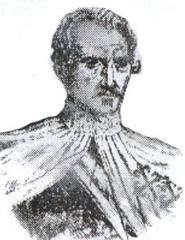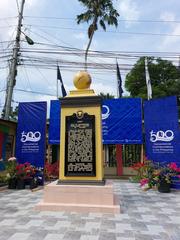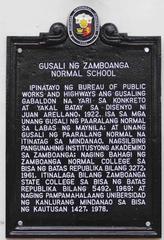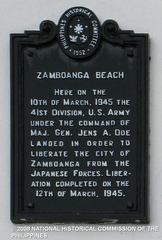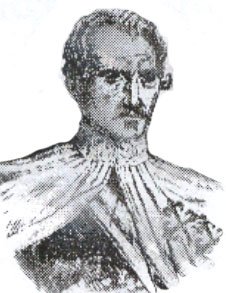
Sebastián Hurtado De Corcuera: Visiting Hours, Tickets, and Historical Sites in Zamboanga City
Date: 15/06/2025
Introduction
Zamboanga City, at the southwestern tip of the Philippines, stands as a vibrant mosaic of history, culture, and resilience. Anchoring its storied past is Fort Pilar, constructed in 1635 under the leadership of Sebastián Hurtado de Corcuera, a pivotal Spanish governor-general whose campaigns profoundly shaped the city’s colonial era. Fort Pilar is more than a military relic—it’s a cultural and historical landmark, reflecting the interplay of Spanish colonial power, indigenous communities, and the multicultural evolution that birthed the unique Chavacano language.
This guide explores Corcuera’s influence, Fort Pilar’s origins, practical visitor information (including hours and admission), accessibility, and nearby attractions. It also delves into Zamboanga’s enduring Chavacano culture, local festivals, and the ongoing legacy of multicultural fusion. Whether you’re a history buff, a language enthusiast, or a traveler seeking immersive experiences, this article will help you make the most of your visit to Zamboanga City (Exploring Fort Pilar and Sebastián Hurtado de Corcuera’s Legacy in Zamboanga; Visiting Fort Pilar: Historic Zamboanga Monument; Discover Zamboanga City Festivals).
Table of Contents
- Early Spanish Colonial Context in Mindanao
- Sebastián Hurtado de Corcuera: Appointment and Vision
- Strategic Role of Zamboanga
- Military Campaigns & Building Fort Pilar
- Administrative Reforms and Multicultural Legacy
- Impact on Local Communities
- Fort Pilar: Visiting Hours, Tickets, and Accessibility
- Nearby Historical and Cultural Sites
- Experiencing Chavacano Culture: Language, Food & Festivals
- Practical Visitor Tips
- Frequently Asked Questions (FAQs)
- References
Early Spanish Colonial Context in Mindanao
In the early 1600s, Spanish colonial ambitions intensified in Mindanao and the Sulu Archipelago. The Crown aimed to consolidate its grip over the archipelago, but faced tough resistance from local sultanates—most notably the Sultanate of Maguindanao under Sultan Qudarat. Zamboanga, strategically positioned at the peninsula’s tip, became a focal point for Spanish military and missionary activities, vital for controlling maritime routes and defending against raids from Muslim rulers in the south.
Sebastián Hurtado de Corcuera: Appointment and Vision
Appointed Governor-General of the Philippines in 1635, Sebastián Hurtado de Corcuera arrived with a clear mandate: secure the southern Philippines, reorganize administration, and suppress local resistance. His military expertise and administrative reforms were instrumental in strengthening Spanish authority in Mindanao (es.wikipedia.org).
Strategic Role of Zamboanga
Zamboanga’s location was crucial for projecting Spanish power into Mindanao and the Sulu Archipelago. Establishing a fortified presence here allowed the Spanish to disrupt the activities of local sultanates, protect settlements, and control key maritime passages.
Military Campaigns & Building Fort Pilar
One of Corcuera’s signature achievements was the construction of Fort Pilar (Real Fuerza de Nuestra Señora del Pilar de Zaragoza) in 1635 (zamboanga.com). This stone fortress became both a military stronghold and a base for missionary work. Its construction involved Spanish soldiers, Mexican recruits from the Manila-Acapulco galleons, local laborers, and indigenous groups.
Corcuera also led aggressive campaigns against Sultan Qudarat’s forces, culminating in a pivotal victory in 1637. These actions established Spanish dominance in Zamboanga and temporarily weakened Maguindanao’s resistance.
Administrative Reforms and Multicultural Legacy
Corcuera implemented administrative reforms to make the Spanish presence more sustainable. He reorganized the Zamboanga garrison, streamlined supply lines, and encouraged the establishment of Christianized settlements (reducciones) around Fort Pilar. These policies fostered the integration of Spanish, Mexican, and various local groups—laying the foundation for Zamboanga’s multicultural identity.
Impact on Local Communities
While Spanish rule brought relative stability, it also led to the displacement of indigenous groups and intermittent conflict with local sultanates. Over time, however, the area became a true melting pot, with the Chavacano language emerging as a bridge among Spanish, Mexican, and indigenous populations (academia.edu).
Fort Pilar: Visiting Hours, Tickets, and Accessibility
Visiting Hours
- Open daily: 8:00 AM – 6:00 PM
- Museum Hours: 9:00 AM – 5:00 PM (Tuesdays to Sundays)
Admission & Tickets
- Fort Pilar Grounds: Free admission; donations appreciated for maintenance.
- Museum: Modest entrance fee; group tours available by arrangement.
Accessibility
- Ramps and paved pathways are available for wheelchair users.
- Some areas may have stairs or uneven surfaces.
Guided Tours
- Local guides offer tours in Chavacano, English, and Spanish.
- Advance booking is recommended for group visits or special language tours.
Nearby Historical and Cultural Sites
- Sebastián Hurtado de Corcuera Museum: Near the airport, featuring artifacts from the Spanish era.
- Pasonanca Natural Park: Offers nature trails and picnic areas close to historical military sites.
- Zamboanga City Boulevard: A scenic waterfront ideal for strolls and sunset views.
- Plaza Pershing: Historic square with monuments and local vendors.
- Yakan Weaving Village: Showcases the city’s vibrant weaving traditions.
Experiencing Chavacano Culture: Language, Food & Festivals
The Chavacano Language
Zamboanga is home to Asia’s largest Chavacano-speaking community—over a million speakers (zamboanga.com). The language blends Spanish vocabulary with local grammar and is a living symbol of the city’s multicultural heritage.
Culinary Traditions
Sample Spanish-inspired dishes like arroz caldo, empanadas, and pan de coco, alongside Malay and Chinese-influenced fare such as satti and pancit (drineblog.blogspot.com).
Festivals
- Zamboanga Hermosa Festival (October): Honoring Our Lady of the Pillar with parades, vinta boat races, and cultural performances (destinozamboanga.com).
- Dia de Zamboanga (February 26): Celebrates cityhood with language, music, and dance.
- Verano in Zamboanga (April): Features beach events and concerts.
- Other Events: Dive Safari, Go Skateboarding Day, and Christmas festivities (allevents.in).
Practical Visitor Tips
- Best Time to Visit: Dry season (November–May) for ideal weather.
- Getting There: Accessible via Zamboanga International Airport; local transport includes tricycles, jeepneys, and taxis.
- Safety: Generally safe for tourists; follow local guidelines.
- Health: Travel insurance recommended; routine and travel vaccinations advised.
- Money: Currency is Philippine Peso (PHP); tipping is customary.
- Connectivity: English widely spoken; mobile and Wi-Fi access is reliable.
Frequently Asked Questions (FAQs)
Q: What are Fort Pilar’s opening hours?
A: Daily, 8:00 AM to 6:00 PM.
Q: Is there an entrance fee?
A: No, entry to the fort is free; donations are welcome. The museum may charge a small fee.
Q: Are guided tours available?
A: Yes, local guides can be arranged on-site or through the tourism office.
Q: Is Fort Pilar accessible for people with disabilities?
A: Yes, ramps and paved paths are available for most areas.
Q: Where can I learn more about Corcuera and Zamboanga history?
A: Visit the Sebastián Hurtado de Corcuera Museum and the Fort Pilar Museum for detailed exhibits.
Q: What are must-see nearby attractions?
A: Pasonanca Natural Park, Yakan Weaving Village, Zamboanga City Boulevard, and Plaza Pershing.
References and Further Reading
- Exploring Fort Pilar and Sebastián Hurtado de Corcuera’s Legacy in Zamboanga
- Visiting Fort Pilar: Historic Zamboanga Monument
- Discover Zamboanga City Festivals
- Zamboanga’s Chavacano Culture – Blend of Spanish, Indigenous, and Asian Influences
- Zamboangueño Chavacano: Philippine Spanish Creole or Filipinized Spanish Creole?
- National Museum of the Philippines
- Tourist Places Guide - Zamboanga
- Hikersbay Zamboanga City Info
- All Events in Zamboanga City
Conclusion
Sebastián Hurtado de Corcuera’s legacy is foundational to Zamboanga City’s history and multicultural identity. Fort Pilar is not only a monument to Spanish resilience but also a living museum of cultural convergence. The city’s unique blend of language, cuisine, architecture, and festivals makes it an unforgettable destination for travelers seeking both historical insight and vibrant cultural experiences.
To stay updated on visiting hours, events, and guided tours, download the Audiala app and follow Zamboanga City Tourism on social media. Discover firsthand why Zamboanga is celebrated as “Asia’s Latin City” and embrace the enduring spirit of its people.
